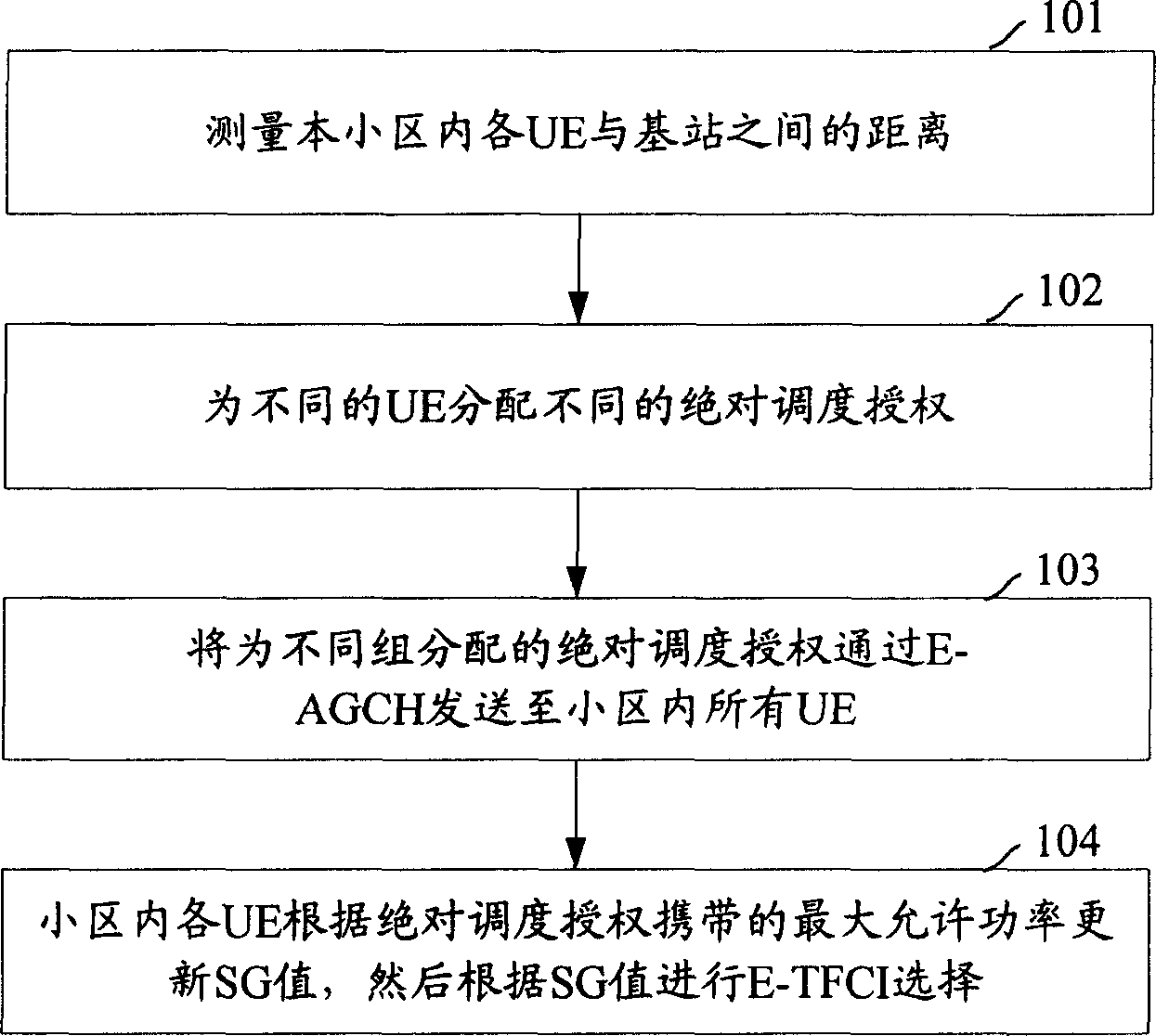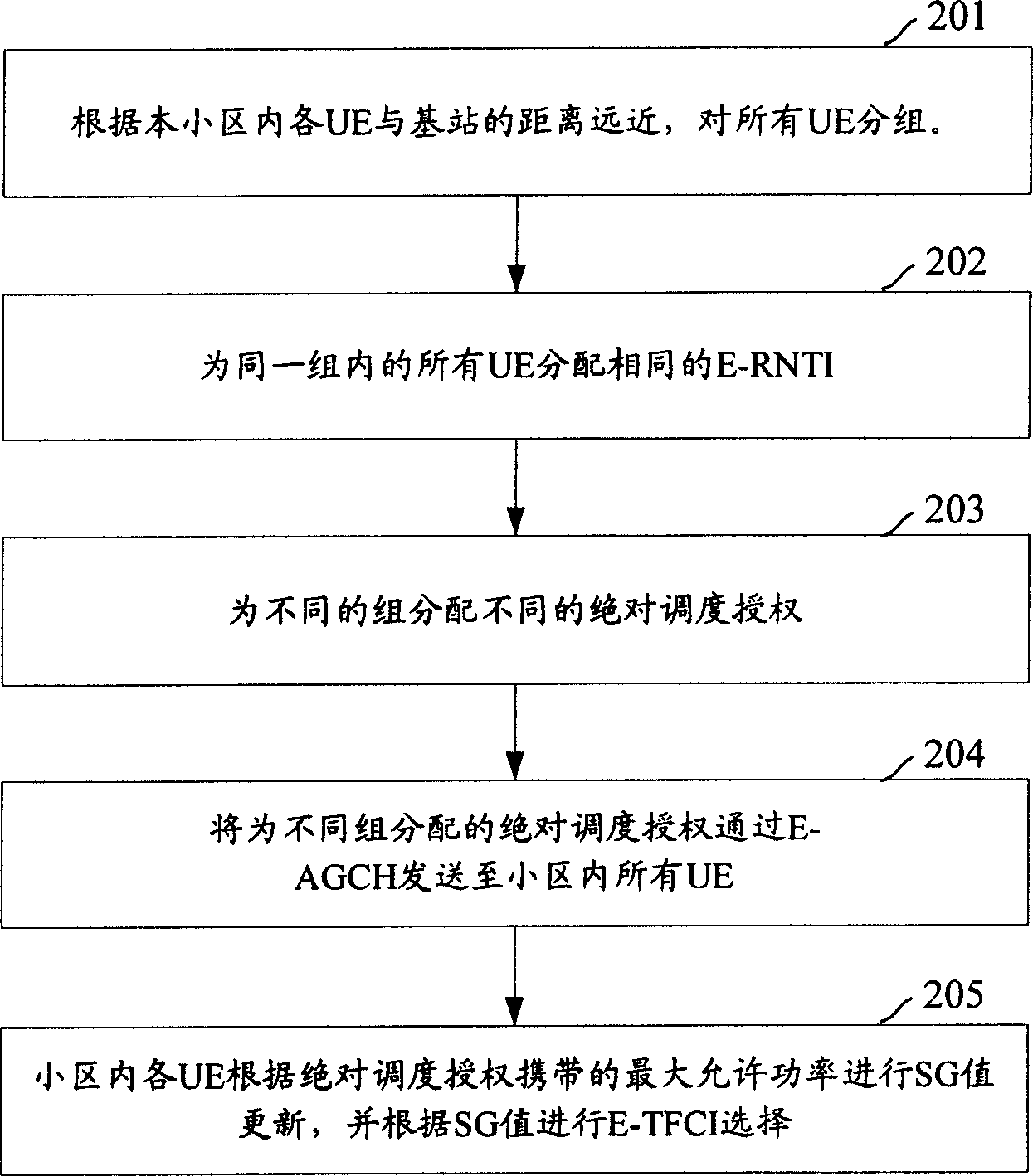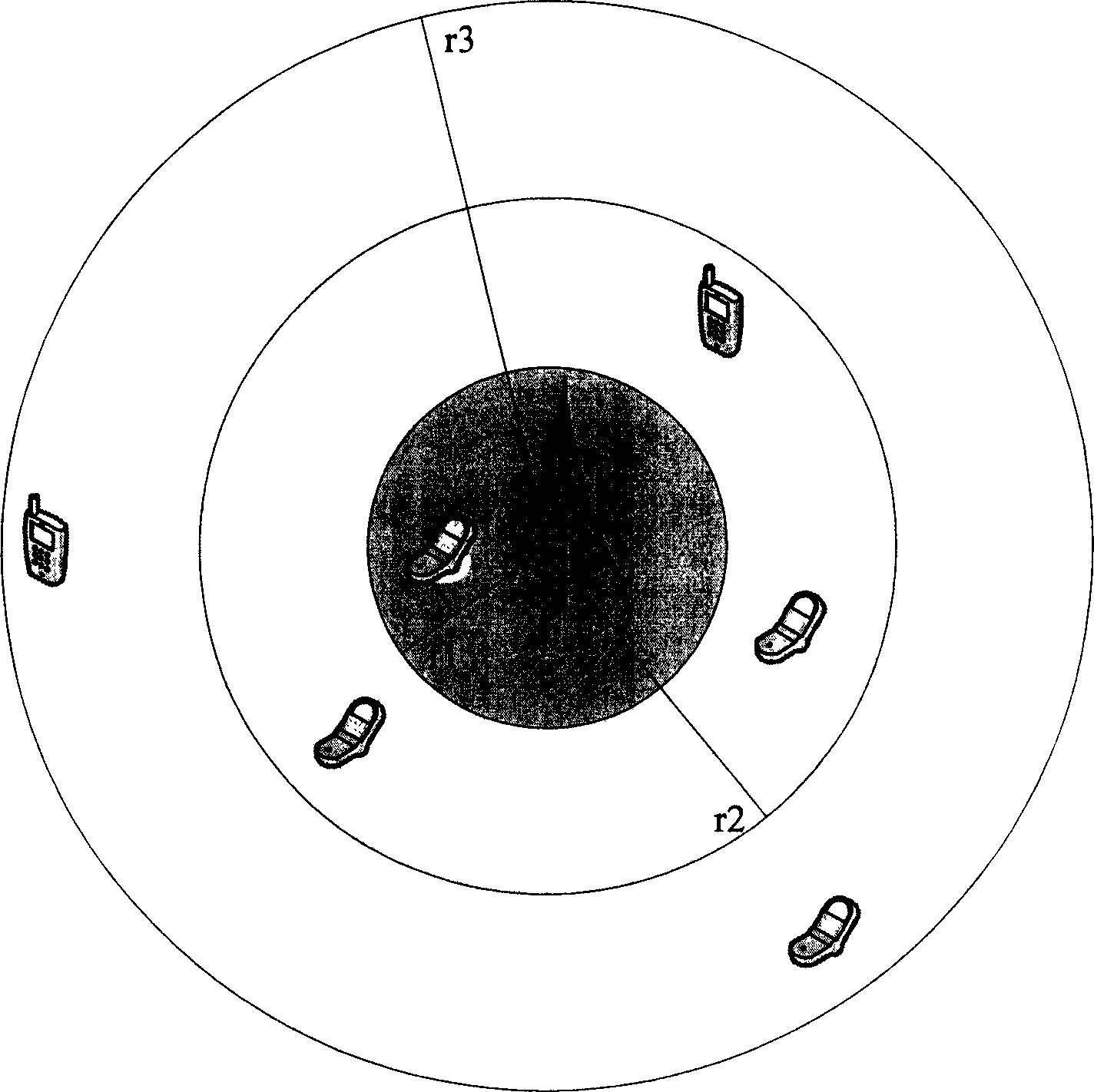Uplink scheduling method for base station control
A scheduling method and base station control technology, applied in the direction of transmission control/balance, communication between multiple stations, etc., can solve problems such as increasing interference from other UEs, wasting downlink transmission power, and reducing wireless resource utilization
- Summary
- Abstract
- Description
- Claims
- Application Information
AI Technical Summary
Problems solved by technology
Method used
Image
Examples
Embodiment 1
[0043] figure 1 It is a flowchart of uplink scheduling controlled by a base station according to Embodiment 1 of the present invention. Such as figure 1 As shown, in this embodiment, the uplink scheduling controlled by the base station mainly includes the following steps:
[0044] Step 101: Measure the distance between each UE in the cell and the base station.
[0045] The specific measurement method is: measure the path loss of each UE during the scheduling process, and estimate the distance between each UE and the base station according to the path loss.
[0046] In this embodiment, the path loss of each UE in the cell is measured at regular intervals, for example, measured once in several scheduling periods.
[0047] Specifically, the path loss of the UE may be measured in various ways. In this embodiment, the path loss is measured in the following manner:
[0048]The first step is to obtain the maximum transmit power of the UE through the configuration of the Node B o...
Embodiment 2
[0060] figure 2 It is a flow chart of uplink scheduling controlled by a base station according to Embodiment 2 of the present invention. Such as figure 2 As shown, in this embodiment, the uplink scheduling controlled by the base station mainly includes the following steps:
[0061] Step 201: Group all UEs according to the distance between each UE in the cell and the base station.
[0062] The specific grouping strategy is to measure the path loss of each UE during the scheduling process, estimate the distance between each UE and the station according to the path loss, and then group the UEs according to the estimated distance.
[0063] The specific method for measuring the path loss of the UE is the same as the method described in step 101, and will not be repeated here.
[0064] After the path loss of each UE in the cell is obtained, the relative distance between the UE and the base station is estimated according to the path loss, that is, the path loss is converted into...
PUM
 Login to View More
Login to View More Abstract
Description
Claims
Application Information
 Login to View More
Login to View More - R&D
- Intellectual Property
- Life Sciences
- Materials
- Tech Scout
- Unparalleled Data Quality
- Higher Quality Content
- 60% Fewer Hallucinations
Browse by: Latest US Patents, China's latest patents, Technical Efficacy Thesaurus, Application Domain, Technology Topic, Popular Technical Reports.
© 2025 PatSnap. All rights reserved.Legal|Privacy policy|Modern Slavery Act Transparency Statement|Sitemap|About US| Contact US: help@patsnap.com



